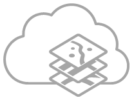Blog Archives
Post navigation

National Grid: Gas Distribution
The rollout of ArcGIS to over 5,000 employees has helped us to work more productively and is expected to lead to cost savings of around £35 million a year.
National Grid has rolled out Esri’s ArcGIS platform as part of a business transformation programme that is expected to lead to cost savings of around £35 million per year. Up to 5,000 employees now use ArcGIS to work more productively, improve operational efficiency and make better informed decisions.
The Customer
National Grid plc is one of the largest investor-owned energy companies in the world. It owns and operates gas distribution assets, which deliver energy to millions of homes and businesses right across Great Britain and the North East USA.
National Grid’s Gas Distribution business has replaced 40 business systems with just four – one of which is ArcGIS – to simplify and optimise its systems landscape
The organisation is saving time and improving its overall efficiency in areas including network design and data capture in the field
The integration of GIS with SAP eliminates data duplication and makes more accurate information available to support decision making
The Challenge
In an industry that is heavily monitored and increasingly competitive, the judgments of the regulator are of utmost importance. Ofgem’s comparator ratings of National Grid’s Gas Distribution business had fallen significantly behind those of its UK peers. Furthermore, National Grid’s customer satisfaction statistics in this division were also lower than both its own expectations and the industry average.
These factors together provided National Grid with compelling evidence of the need for change in its Gas Distribution business. The company wanted to urgently improve its standing with Ofgem, but it also had to start to prepare for the new challenges it would face in the future.
Pete Massey, Director of the company’s Gas Distribution Transformation Programme, explains: “We were not performing as strongly as our peers in the industry, but this wasn’t our only concern. We saw that the world was changing to be much more customer focused, more innovative and cost-conscious. This new world that we were moving into was going to be even more challenging and would stretch our capabilities to the limit, so we knew that we had to transform.”
Most of our activities are location based, so we could see we needed to get more of our processes on digital maps and make GIS capabilities accessible to employees right across the business
Pete Massey – Director of Gas Distribution Transformation Programme, National Grid
The Solution
As a core part of its business transformation, National Grid took the radical decision to reduce its business systems from forty to four to create a simplified, standardised and integrated systems landscape. National Grid had been using Esri Geographic Information System (GIS) solutions for many years, and this was the only solution carried forward to the new IT environment. Here, Esri’s ArcGIS software was integrated with the SAP Enterprise Asset Management (EAM) system, the SAP Customer Relationship Management System (CRM) and Syclo mobile applications.
The organisation recognised that Esri’s ArcGIS technology was the most intuitive way for users to work with network asset information, so it decided to make mapping technology accessible to the majority of its 5,000 UK employees, including its customer call centre staff and mobile engineers. “Most of our activities are location based, so we could see we needed to get more of our processes on digital maps and make GIS capabilities accessible to employees right across the business,” Massey says.
We have reduced a complex nine-step business process to six integrated stages, which has improved our efficiency significantly
Pete Massey – Director of Gas Distribution Transformation Programme, National Grid
The Benefits
National Grid has succeeded in fundamentally changing the way that it works. It has redesigned many of its most critical business processes, to significantly improve cost efficiency and employee productivity. National Grid estimates that its entire transformation programme will deliver a cost saving of £35 million per year. “The use of GIS is a key part of this saving and provides new insights into our asset and business performance,” Massey says.
Previously, National Grid created designs for network extensions and replacements on paper and then manually generated the corresponding work orders. Now, engineers design new networks directly on maps in ArcGIS, and the work orders are produced automatically from these digital designs. “We have reduced a complex nine-step business process to six integrated stages, which improves our efficiency,” says Massey. “Our new integrated process also enables us to improve the accuracy of our cost estimates and cost tracking, create more precise network designs, make planned network changes more visible to the entire business and reduce the likelihood of manual errors.”
The use of ArcGIS on portable computers enables National Grid’s mobile engineers to locate assets and jobs much more easily and work more productively. If the ‘as-built’ infrastructure differs from the network plan, data capture technicians can easily mark up any changes on the asset map while in the field. These changes are sent automatically to a central quality assurance team and, from there, asset updates are fed directly into SAP. “The whole process is much slicker and a lot more efficient,” says Massey.
The integration of GIS with SAP eliminates data duplication and inconsistency and makes more accurate asset information accessible to support decision making. Highly intuitive, the GIS design solutions and simpler business processes have been a hit with employees.
The whole process is much slicker and a lot more efficient
Pete Massey – Director of Gas Distribution Transformation Programme, National Grid
The Future
National Grid is now considering the creation of online mapping solutions and GISbased ‘apps’, enabling consumers to more easily check the status of works in their neighbourhoods, book appointments and report faults. These new customer services, together with the efficiency and process improvements already achieved, are expected to lead to higher Ofgem rankings, stronger performance against industry peers and rising customer satisfaction.
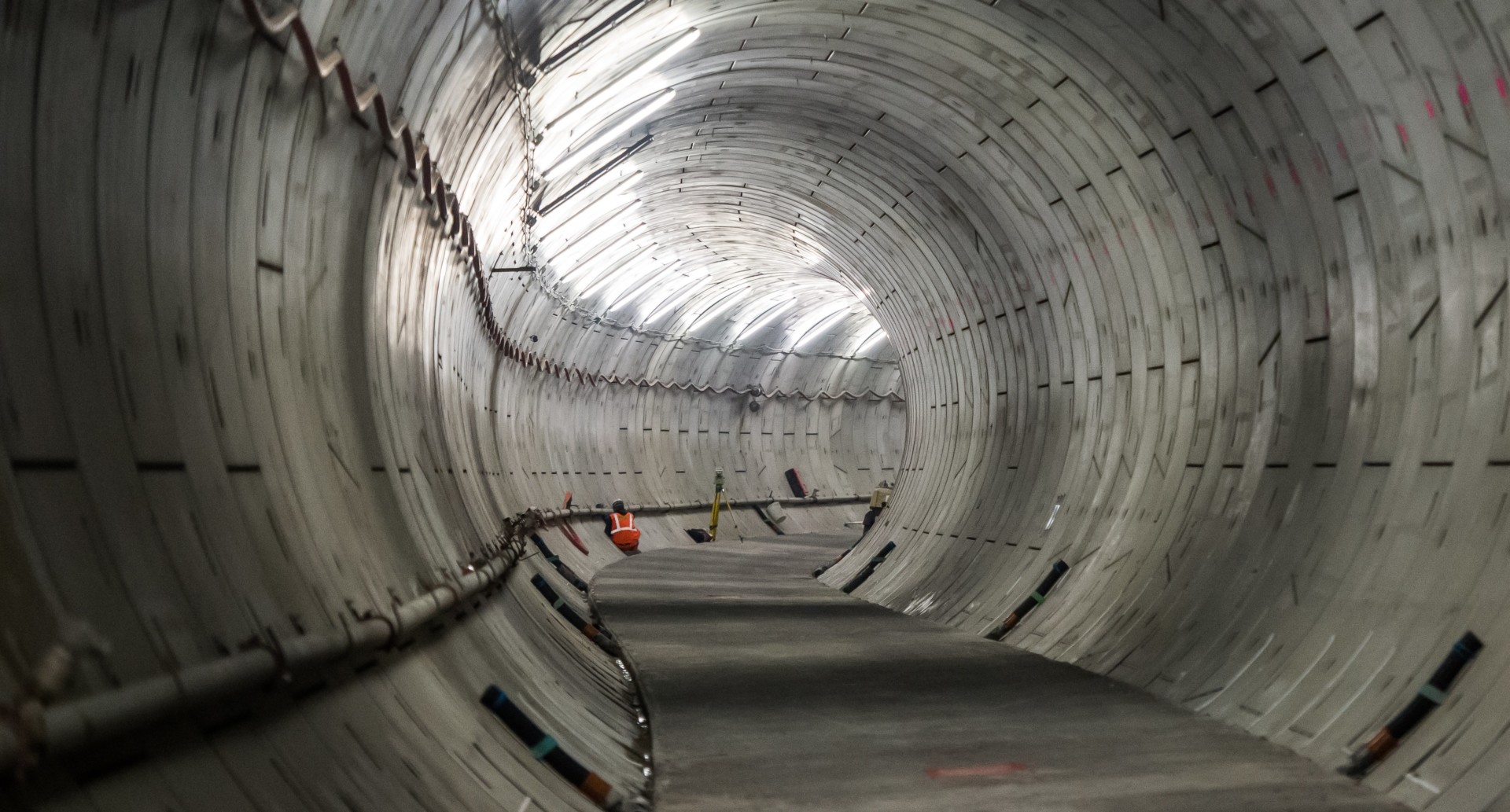
Crossrail
We manage hundreds of simultaneous programmes of work in ArcGIS, helping us to manage cost efficiency, ensure site safety and share information securely.
The Crossrail project uses Esri’s ArcGIS to manage hundreds of simultaneous programmes of work and account for millions of new assets. The organisation has created a range of web, mobile and 3D GIS apps that help manage cost efficiency, ensure site safety and share information securely.
ArcGIS improves the productivity of Crossrail’s Asset Protection Engineers by up to 80%
The Challenge
The £15 billion pound Crossrail project is delivering a new railway for London and the South East of England. Europe’s largest infrastructure project, it encompasses 42km of tunnels and 10 new stations. The finished railway will be an accessible route of 40 stations from Reading and Heathrow in the west, through central London, to Shenfield and Abbey Wood in the east.
A project on this scale requires a geographic information system (GIS) to record and manage the ever-changing inventory of assets and many simultaneous programmes of work. Crossrail’s existing GIS needed to be updated to ensure it was fully compatible with modern browsers and operating systems. The proposed new solution also needed to be more time efficient and offer the cutting-edge capabilities needed.
The use of a temporal slider tool in ArcGIS helps to improve estates management
The Solution
Following a thorough competitive evaluation, Crossrail Ltd entered into an Enterprise Licence Agreement (ELA) with Esri UK. With support from Esri UK’s Professional Services team, it then used Esri’s ArcGIS to develop an integrated suite of server-based, desktop, web, mobile and 3D applications in 14 months. The organisation now uses:
- ArcGIS Desktop and ArcGIS Server to prepare data and perform spatial data analysis
- Portal for ArcGIS to make comprehensive, up-to-date information available to employees, designers and contractors via a secure intranet
- ArcGIS Mobile and ArcGIS Collector App to allow field-based personnel to see and correct the locations of assets, using mobile devices
- ArcGIS 3D capabilities to deliver three dimensional visualisations of facilities and their surroundings
- ArcGIS Online and Esri UK’s Open Data Portal to publish selected content for the general public, media and third parties
Crossrail also elected to use Esri UK’s Data Service, which streams Ordnance Survey background mapping and other contextual data directly into Crossrail’s corporate GIS. The use of this service has rapidly improved the quality of background mapping and reduced the need for time-consuming data management, saving several hundred hours of effort per annum.
An ArcGIS Mobile GIS solution helps to improve site security and public safety
The Benefits
ArcGIS has given Crossrail the flexibility to innovate and introduce valueadding GIS services over time. The first of its new solutions are already delivering benefits for the business, such as:
Increased employee productivity
Crossrail’s Asset Protection Engineers now use an ArcGIS-based app to help them produce ground movement reports in response to claims where settlement issues have potentially arisen. The engineer can use the app to select, collate and present all of the information required, resulting in up to 80% less time spent on the report.
Effective estate management
The responsibility for construction sites passes from one contractor to another in different project phases. By using a temporal slider tool in ArcGIS, employees within the organisation can easily see which contractors are responsible for which parcels of land at any one time. The solution therefore improves understanding of liability and reduces the risk of unauthorised occupation over a multitude of construction sites, avoiding unnecessary delays and cost overruns.
More cost efficient operations
In another initiative, Crossrail is using ArcGIS to model facilities in 3D for the first time and prepare an invaluable 3D asset record for the new station operators. The 3D capabilities of ArcGIS have enhanced the understanding of the relationships between assets and facility spaces, enabling them to be maintained more cost efficiently. Infrastructure Managers can also identify and analyse issues on the ground with greater understanding than before.
Improved safety and security
When Crossrail’s employees survey construction sites they use the ArcGIS Collector App on mobile tablets to check the exact boundaries against land records, and enter any observations or on-site variations. Crossrail can then ensure that hoardings are correctly placed to secure sites and help keep the public separate from the works taking place on site. The 3D mapping of stations may also prove critical in the future for helping the station operator.
Clear communication with external audiences
Using ArcGIS, Crossrail can easily share data about its routes, assets, tunnels and stations with third parties, the general public and the media. In the future, the organisation plans to make it possible for partners, such as Transport for London, to consume its data as web services or gain secure access to Crossrail’s central GIS portal. This approach will not only improve collaboration with partners; it is expected to also decrease the time that Crossrail spends managing content for third parties and reduce the risk of decisions being made on the basis of out-of-date information.
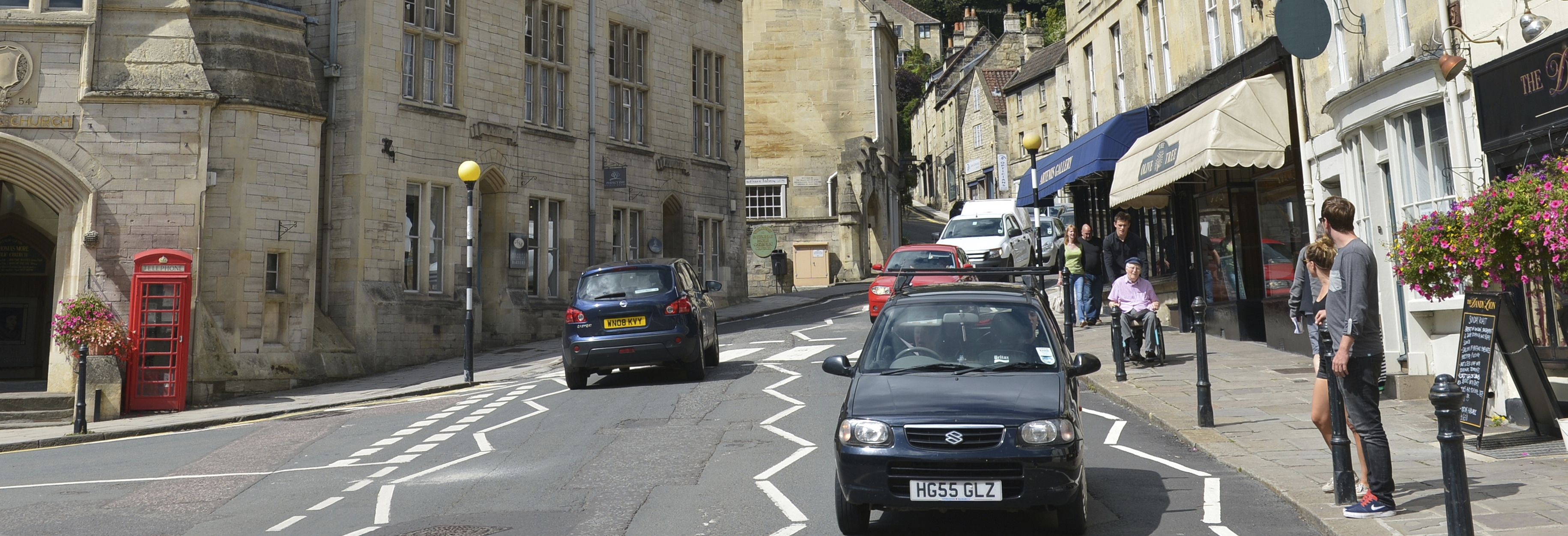
Wiltshire Council
We have a responsibility to ensure that the tax payer’s money is spent appropriately and Mobile GIS has revolutionised working practices, saving time and money.
Following the launch of a new data collection solution for mobile workers, Wiltshire Council has identified savings of £275,000, over a five year period, in one department alone. It now plans to roll-out mobile apps to additional business teams in an initiative that is expected to both improve public services and lead to further cost reductions.
Esri’s ArcGIS Collector app allows teams to collect and edit asset information in the field and makes updates instantly visible to colleagues
Citizens benefit from improved public safety and enjoy council amenities that are more proactively maintained
Plans to extend the use of mobile GIS are expected to contribute to further savings in other departments and a reduction in the council’s carbon footprint
The Challenge
“Everybody matters” according to Wiltshire Council’s well publicised mission statement, and it is this fundamental principle that undoubtedly guides and shapes public services in the county. Like all local government organisations, however, Wiltshire Council has to balance its desire to improve its services with the omnipresent pressure to reduce costs. It also has to consider the environmental impact of its services and minimise its carbon footprint.
The highways team within Wiltshire Council was keen to adopt more mobile working practices to help it deliver a top quality public service more efficiently, and sustainably. The team was working from paper maps in the field and a great deal of time was spent travelling to and from the office, as well as transferring data from paper records to IT systems. Inevitably, data inconsistency issues arose occasionally, and the council didn’t want to risk key decisions being made on asset information that was out-of-date or inaccurate.
We have a responsibility to make sure that taxpayers’ money is spent in the best way that it can be. If we are reducing the amount of time and petrol wasted, we can deliver more efficient and proactive services to benefit the population
Julie Seddon – Solutions Manager for Spatial Information at Wiltshire Council
The Solution
Wiltshire Council had been using geographic information system (GIS) technology from Esri UK for the last four years and had an Enterprise License Agreement that gave it unlimited access to Esri’s ArcGIS platform. Therefore, there was no need to invest in any additional software. Matt Rudd and Lauren Wilson from the Spatial Information Team hadn’t developed mobile apps before but, following a one-day JumpStart training programme delivered by Esri UK, they had all the skills and confidence they needed to implement a new mobile GIS.
The solution the council developed specifically for the highways team runs on Samsung tablets and comprises three ArcGIS Collector Apps – drainage, fixed assets (benches, railings, bollards etc.) and play areas. It also includes four supplementary ArcGIS Online Viewer Apps for street litter, grounds maintenance, street cleaning and winter maintenance.
Twenty four highways employees now have access to the mobile apps to identify and plan the areas they wish to survey. Then, once they are at those locations, they use ArcGIS Collector to collect information about specific assets on their tablets, take and save photographs, update records and log changes in the condition of assets as necessary
If highways employees are working in areas with 3G coverage, their asset updates are instantly conveyed to the council’s central GIS. However, when they are working in locations where the mobile signal is poor, such as on Salisbury Plain, their updates are saved on the tablets and synchronised later. Julie Seddon, Solutions Manager for Spatial Information at Wiltshire Council, believes that this capability is critical for successful mobile working. “Wiltshire is such a rural county that offline functionality is absolutely key,” she says.
With one central source of master data, we now have up-to-date, accurate drainage and highways asset information that everyone in the council can rely upon. This improves our decision making and, ultimately, the services we deliver to the public
Julie Seddon – Solutions Manager for Spatial Information at Wiltshire Council
The Benefits
The Head of Local Highways and Parking Services, Adrian Hampton, calculated that use of the mobile GIS would lead to a £30,000 saving per year on petrol and other travel expenses, as employees no longer have to make so many journeys between the office and the field. Time savings and other process efficiencies contribute a further £24,000 cost reduction, creating a total annual saving of £55,000 or £275,000 over five years. “This is an exceptional result, considering that the highways mobile solution cost just £250 to create in staff time,” says Seddon.
Within months of rolling out the highways solution, it became clear that this practical app could revolutionise the way in which many different council teams worked. The Spatial Information Team therefore started working with other business units, such as emergency planning, and expects to roll-out mobile GIS apps to further teams during the year. The potential five-year savings for the council could therefore increase further in the near future.
Wiltshire Council has yet to calculate the carbon savings that it will achieve from more extensive use of mobile GIS across the unitary authority. However, it is already clear that the reduction in unnecessary journeys and petrol usage will have an important benefit for the environment.
Most significantly, the council has been able to improve its public services, alongside achieving cost and carbon savings. Employees in the highways team can spend more time in the field, managing the conditions of assets, so citizens benefit from better quality amenities like play areas and cycle railings.
Broken equipment can be identified and isolated promptly, so public safety is improved, and the council less exposed to risk. Seddon explains: “If we can proactively capture information about the condition of assets and instigate repairs more quickly, we can reduce claims and safeguard our communities.”
Finally, the highways live master data captured in the field can be shared with all GIS users via ArcGIS Desktop, LocalView Fusion or ArcGIS Collector within the council. “With one central source of master data, we now have up-to-date, accurate drainage and highways asset information that everyone in the council can rely upon,” Seddon enthuses. “This improves our decision making and, ultimately, the services we deliver to the public.”

Sovereign Housing Association
ArcGIS adds value right across our organisation, enabling us to plan and build new homes, work efficiently and deliver better services for residents
Responsible for 38,000 homes across the south and south west of England, Sovereign Housing Association uses Esri’s ArcGIS enterprise-wide to help it address a range of business challenges. The solution helps it to deliver more responsive customer services, better understand the needs of tenants and plan strategically for future growth.
The Customer
Sovereign Housing Association has extended its use of GIS in a strategic, enterprise-wide initiative that is transforming core business operations. Now, the organisation can deliver more responsive customer services, better understand the needs of its residents and plan more strategically to build new homes.
ArcGIS gives the organisation clearer insight into issues faced by tenants and their property requirements
Sovereign can respond more quickly to enquiries from tenants and deliver better customer service
The organisation uses ArcGIS to reveal business development opportunities and share information with local councils
The Challenge
Sovereign manages and maintains more than 38,000 homes across the south and south west of England. Already one of the UK’s largest housing associations, the organisation aims to grow to 50,000 homes by 2018, to help address the critical shortage of affordable property in this part of the country. It is, however, often difficult to identify suitable development sites that will pass the scrutiny of planning authorities, so Sovereign has to be able to work closely with local councils to facilitate its growth plans.
The housing association currently has more than 80,000 residents in its properties and strives to deliver the best possible services to enable these people to live comfortably and happily in their homes. To consistently achieve a high standard of customer service, it needs an accurate understanding of its residents’ needs and concerns, as well as efficient operations so that it can respond quickly and effectively.
When we first used ArcGIS Online in a meeting to highlight potential development sites to a team from a local council, their jaws dropped. It was incredible. ArcGIS has opened up a whole world of opportunity and will certainly help us to achieve our planned growth
Andrew Bradley – GIS Manager, Sovereign Housing Association
The Solution
Sovereign had been using geographic information system (GIS) solutions to manage spatial data for some time, but, in the year of its 25th anniversary, it took the strategic decision to exploit the powerful analysis capabilities of GIS more extensively as part of a wide-ranging business transformation programme. It selected a comprehensive suite of solutions from Esri’s ArcGIS, including ArcGIS Server Enterprise Advanced, ArcGIS Desktop, ArcGIS Online, 3D Analyst, Spatial Analyst and Network Analyst and began to apply GIS to pressing business challenges.
At the same time, the organisation decided to extend GIS capabilities out to the whole business, aiming to train 500 employees across all parts of its business by summer 2015. With support from Esri UK’s professional services team, Sovereign built a GIS-based web app to deliver accurate information about properties, assets, land and residents to employees working in all departments ranging from housing services to the customer call centre. Available via the company’s secure intranet, this solution gives everyone in the business instant access to up-to-date business information, all in one place, in an easy-to-use interactive map-based format.
ArcGIS is adding value right across our organisation and will continue to do so for years to come. It will enable us to plan and build new homes, work efficiently and deliver better services for residents
Andrew Bradley – GIS Manager, Sovereign Housing Association
The Benefits
The enterprise-wide use of ArcGIS has begun to transform the way in which employees work and will deliver long-term benefits for the organisation, as Andrew Bradley, GIS manager at Sovereign, explains. “ArcGIS is adding value right across our business and will continue to do so for years to come,” he says. “It will enable us to plan and build new homes, work efficiently and deliver better services for residents.”
Sovereign employs its new ArcGIS solutions to conduct analysis and gain a deeper insight into business issues and tenant needs. For instance, the company collected data on the incomes and living costs of its residents, at all of its different locations, and performed GIS analysis to ascertain the impact that the government’s new ‘benefits cap’ would have on residents over a period of 5-10 years. When the findings were displayed on a digital map with a time lapse slider, the effects of the new policy became clear. “We could see a wave of impact coming out of London over time and identify easily where and when different types of households would start to struggle,” says Bradley. “ArcGIS is a very powerful tool, helping us to better understand and respond to our residents’ needs.”
ArcGIS enterprise is proving particularly beneficial for Sovereign’s strategic asset management group, a team tasked with identifying and qualifying development opportunities. It has successfully used ArcGIS to pinpoint locations where Sovereign-owned land lies adjacent to under-utilised council-owned land. It then uses ArcGIS Online to share this information with councils and commence negotiations about mutually-beneficial new housing projects. Bradley recalls: “When we first used ArcGIS Online in a meeting to highlight potential development sites to a team from a local council, their jaws dropped. It was incredible. ArcGIS has opened up a whole world of opportunity and will certainly help us to achieve our planned growth.”
Now, if residents contact Sovereign with an enquiry about a boundary, employees can quickly check on the Intranet-based GIS and often clarify issues instantly. Previously, such boundary enquiries had to be passed on to the company’s legal team, and responses could take up to 21 days according to the company’s Key Performance Indicators (KPIs). “Our employees are empowered with information that they simply didn’t have before,” Alice Rhodes, GIS Analyst at Sovereign says. “Customers get accurate information much more quickly.”
Finally, ArcGIS is enabling Sovereign to improve its operational efficiency, as all employees can share information much more easily. They no longer have to send emails from team to team requesting data and waste time chasing up further details. Instead, they can simply look up the information they need straight away and work more productively.

Argent
We can share information with both internal and external stakeholders, schedule multiple simultaneous projects and make critical business decisions with ArcGIS
Responsible for one of London’s largest ever mixed-use development projects, Argent depends on Esri’s ArcGIS to help it manage assets and share information with both internal and external stakeholders. GIS plays a pivotal role in enabling the organisation to schedule multiple simultaneous projects and make critical business and financial decisions.
The Customer
Argent is a leading property development company. In 2008, it joined forces with London & Continental Railways Limited and DHL Supply Chain to form the King’s Cross Central Limited Partnership (KCCLP) and embarked on one of London’s largest ever mixed-use development projects.
Argent uses Esri’s cloud-based service, ArcGIS Online, to share asset maps with colleagues, partners, contractors and other third party organisations
Users can drill down from maps of the entire development site to individual roads, buildings and pipelines and click for up-to-date project information
A GIS phasing tool allows Argent to scrutinise how the 67 acre site will look at different points in the future and make more informed financial and business decisions
The Challenge
In the heart of London, adjacent to busy King’s Cross and St. Pancras rail station lies 67 acres of brownfield development. By 2020, the area will accommodate 50 new and reused buildings, up to 2,000 homes, 20 streets and 10 public squares, providing a modern environment where some 45,000 people can work, live and study.
Argent is responsible for the development and asset management of this ongoing transformation. Over twenty project managers are working together with a wide range of contractors and consultants, using shared services and facilities in close proximity.
One of the challenges faced by Argent and KCCLP was how to manage large amounts of asset information – and indeed how to communicate this information to different stakeholders within KCCLP and Argent, as well as external partners, contractors and stakeholders.
Argent possessed asset maps and plans, but needed the technical capability to share this asset information and the ability to keep pace with constant changes in asset data during the many project phases
Steven Eglinton – Director of GeoEnable
The Solution
Argent called in consulting firm GeoEnable for advice on how to overcome its asset and project management spatial challenges, as part of a wider initiative to improve information management. GeoEnable identified how geographic information system (GIS) technology could play a key role in the solution, alongside new internal business processes.
Argent had a basic desktop GIS solution, which no longer met the needs of the business. Director of GeoEnable, Steven Eglinton, says: “Argent possessed asset maps and plans, but needed the technical capability to share this asset information and the ability to keep pace with constant changes in asset data during the many project phases.”
GeoEnable deployed Esri’s ArcGIS Desktop solution in conjunction with ArcGIS Online for Organisations, Esri’s cloud-based GIS service. Used together, these GIS solutions allow Argent to create dynamic, interactive asset maps locally, and then share them with team members via the intranet. Users can view high level plans of the entire site, or drill down to individual roads, pipelines or buildings and click on the maps linked to the project management database.
Most Argent employees use a web browser to access ArcGIS Online from their desktops. However, a small but growing number employ customised web apps to access the same capabilities from their smart phones and tablets, while away from the office.
GIS is a strategic asset management tool for business planning as well as site management
Lilia Wydra – GIS Manager at Argent
The Benefits
ArcGIS Online provides a complete, accurate record of all assets involved in the King’s Cross development, both installed and planned, and this information is accessible to everyone in the organisation from planners and surveyors to board members. Every week, projects progress and new contractors arrive; all this data is regularly updated in the GIS, so everyone has access to the same accurate information. “It is easy for everyone to get asset information instantly, whenever they need it,” says Argent’s GIS Manager Lilia Wydra.
ArcGIS Online includes a ‘phasing tool’ that enables users to look forward and see how the site might look at different points in time. This feature plays a critical role in helping Argent to make high-level business and financial decisions, as well as project-level decisions. “The asset information that is accessible via ArcGIS Online influences many decisions we make, from how to plan on-site logistics to when to start marketing new homes, offices and retail outlets,” says Wydra. “GIS is a strategic asset management tool for business planning as well as site management.”
At present, the web-based GIS solution is accessible to Argent and KCCLP employees and a limited number of consultants to KCCLP. The company is also working with external consultancies and construction firms on the development site. GIS has significantly improved KCCLP’s ability to collaborate with third parties and helps to ensure that everyone involved in the King’s Cross development is properly informed.
One of the key advantages of having instant access to shared asset information is that it helps to improve record keeping and phasing. By accessing time-aware information users can easily access what is proposed, when contractors are working on site and clearly see when projects are due for completion. This allows better planning and identifies potential clashes. This is a particularly important issue on large projects like the King’s Cross development, where many different organisations are working together in close proximity.
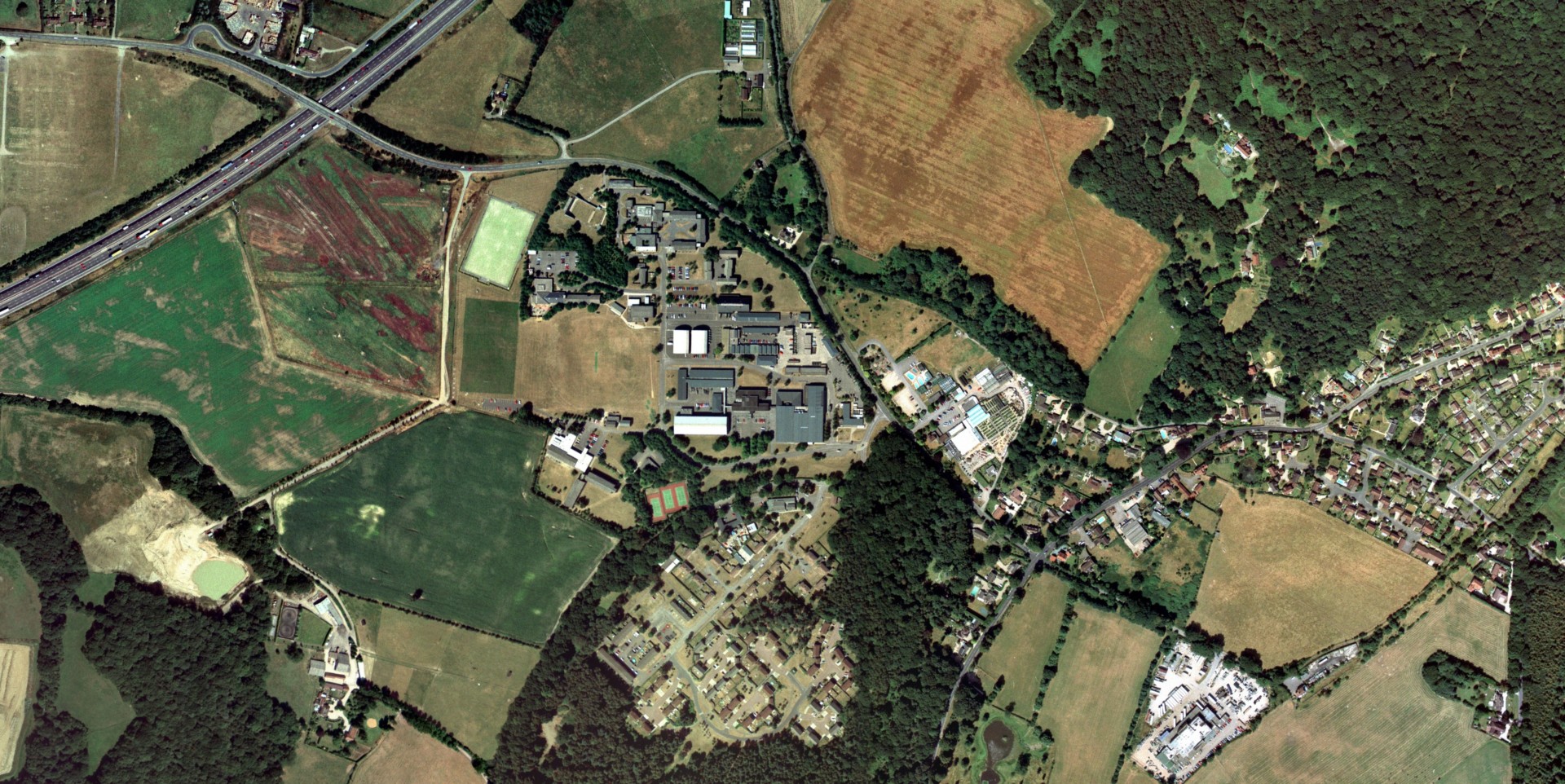
Joint Aeronautical Geospatial Organisation (JAGO)
ArcGIS provides British Forces with a single, authoritative source of geospatial data so we have a common operational picture for military operations
Part of the Ministry of Defence, JAGO provides vitally important geospatial services to support the British Armed Forces. The organisation used solutions from Esri’s ArcGIS platform to develop a mobile GIS capability that is transported into war zones to provide military teams with up-to-date, accurate situational intelligence.
The Customer
Within the UK’s Ministry of Defence (MOD), the Joint Aeronautical Geospatial Organisation (JAGO) is responsible for providing geospatial capabilities to support British Forces. In particular, the organisation develops, supports and manages geospatial Information Systems for use by 42 Engineer Regiment (Geographic) in operations at home and overseas.
The GIS solution, named DataMan, provides British Forces with a single, authoritative source of geospatial data – a common operational picture – for military operations
The 42nd Engr Regt uses DataMan to quickly produce accurate, customised briefings in hostile situations, such as conflict zones
Commanders can make faster tactical and strategic decisions, with the assurance that they are acting on the most up-to-date data and intelligence
The Challenge
The geospatial analysts of 42 Engr Regt (Geo) are required to employ their geospatial analysis and cartographic skills in cramped and very basic conditions in some of the world’s most inhospitable and dangerous environments. Operating with limited resources in small numbers, they work closely with UK forces and their coalition partners to collect local intelligence, analyse data and produce up-to-date mapping and briefing services for commanders.
Over time, the volume of data handled by the organisation had grown rapidly, leading to a number of data management challenges. Like many organisations, JAGO had built its capability around many individual desktop systems with no central data repository. This was resulting in multiple versions of the same data sets. “We needed to manage our data better to create a single view of the truth,” says Keith Mosley, capabilities development manager at JAGO. “At the same time, we also wanted to take advantage of new web services architectures to deliver data more effectively to military personnel, at home and in theatre.”
We needed to manage our data better to create a single view of the truth. At the same time, we also wanted to take advantage of new web services architectures to deliver data more effectively to military personnel, at home and in theatre
Keith Mosely – Capabilities Development Manager
The Solution
JAGO developed a joined-up solution to extend and optimise its existing geospatial systems. It called upon Esri UK to help develop a new centralised system using Esri ArcGIS Server technology. The system called DataMan provides a central repository for all of JAGO’s geospatially referenced data and delivers data and mapping services to users via an easy to use web-browser interface over secure networks.
JAGO also received support from Helyx Secure Information Systems, a specialist defence consulting firm and Esri UK business partner. Mosley said: “We have a very close relationship with both Esri UK and Helyx and receive an excellent service from them.” When they are dispatched into hostile environments, teams from 42 Engr Regt (Geo) take everything they need to deploy DataMan within a set of ruggedised green boxes. An integral SQL server database manages the data; a web server handles the SharePoint web portal; and a GeoProxy facilitates the connection to the external network. The whole system can be active and accessible within hours.
JAGO also built a browser based application called GeoViewer using Esri’s Flex application programming interface (API) to access web services remotely and securely. GeoViewer makes it easy for engineers to add and manage data, perform analysis and print on demand. JAGO has developed different versions of its GeoViewer to meet the needs of teams in specific regions, such as a “Helmand GeoViewer” for use in southern Afghanistan.
Esri UK has helped us deliver a new level of understanding. We couldn’t do what we do without the support we get from Esri UK and Helyx
Keith Mosely – Capabilities Development Manager
The Benefits
DataMan was launched in March 2010 and within nine months was receiving over two million hits per month from a wide range of users throughout the command chain. This rapid take-up is testimony to its ease-of-use and relevance to day to day operations. Users at all levels, with little or no GIS experience, can quickly access the same data – whether they are in barracks, on a training exercise or in theatre.
Users connect to DataMan and know that they are looking at the latest information. In the past, analysts would have worked from data CDs which meant it was difficult to track versions. “DataMan provides a single authoritative source of geospatial data for military operations,” says Mosley. “When anyone pulls data from DataMan they know that it is the best available, the most appropriate and the most up-to-date.”
This capability enables 42 Engr Regt (Geo) to quickly produce customised briefings in theatre, displaying information on everything from the likely locations of roadside bombs to the ethnicity of local communities.
Other organisations and agencies have been encouraged by the rapid adoption of DataMan and share data through the system. There are now over 350 data layers ranging from aerial reconnaissance and intelligence from ground patrols; through to information that was held by external organisations in spread sheets, such as lists of medical facilities in Afghanistan. This data is accessible to all units and partners working in the vicinity.
DataMan is used by commanders to inform orientation exercises, assess threats, plan missions, determine patrol routes, organise operational and tactical activities and conduct post-operation reviews. Because it delivers a wider range of reliable and current information – it is improving the quality and speed of tactical and strategic decision making. Mosley explains: “DataMan helps to improve situational awareness and understanding. Commanders can make better decisions about where they go and where they don’t go, based on a better understanding of current threats. It’s helping to save lives.”
DataMan helps to improve situational awareness and understanding. Commanders can make better decisions about where they go and where they don’t go, based on a better understanding of current threats. It’s helping to save lives
Keith Mosely – Capabilities Development Manager
The Future
It has long been JAGO’s goal to deliver a common geospatial picture to the widest possible range of users – not just geo specialists. With the development of DataMan, JAGO believes that it is well on the way towards achieving this goal. It is extending the reach of its new capability, so that it can add value across more defence organisations.
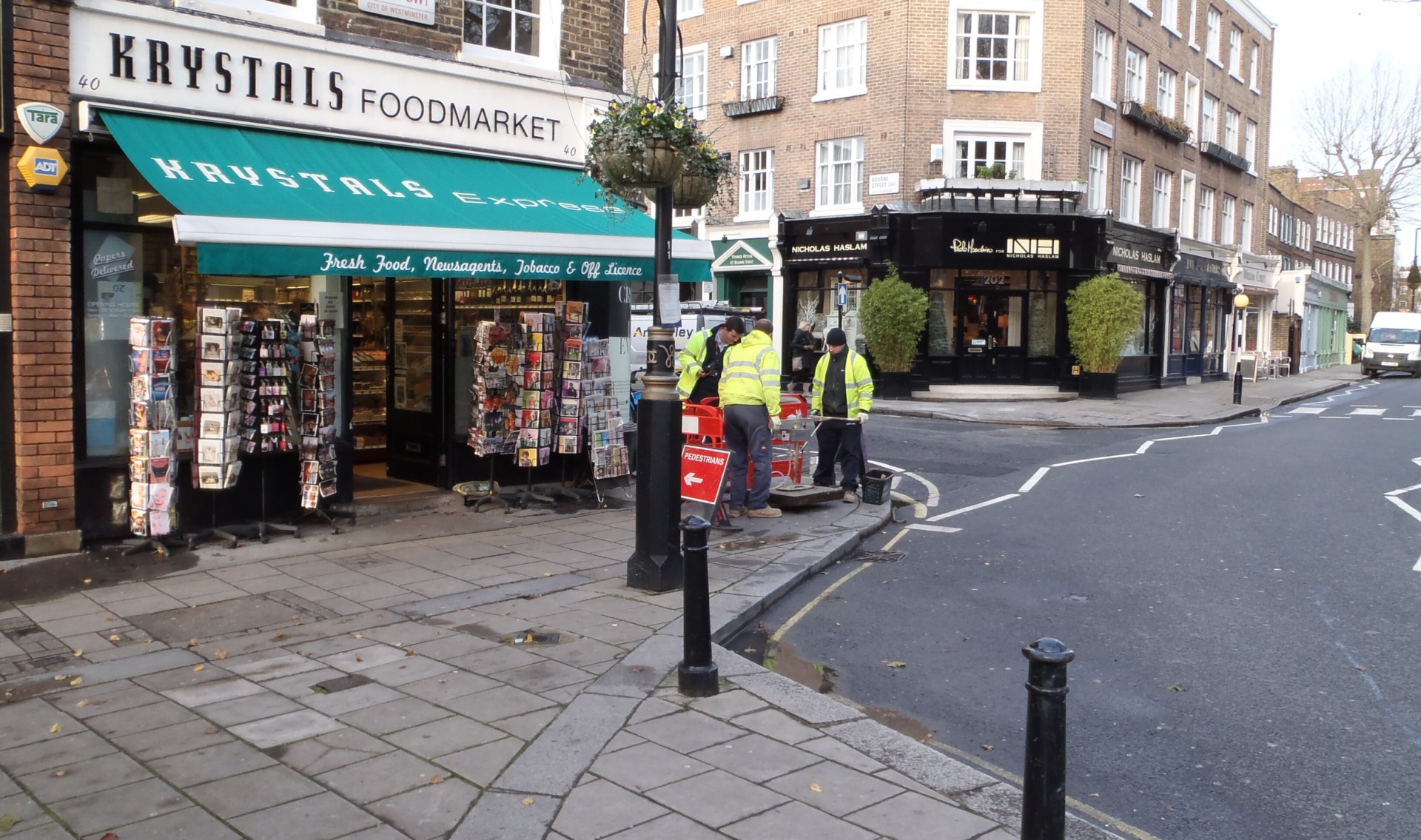
Black & Veatch
The use of mobile GIS to locate and photograph electrical pits has enabled us to deliver a project in weeks that might otherwise have taken years.
Working on behalf of UK Power Networks, Black & Veatch succeeded in surveying 30,000 assets, over an area of 29,000 km2, in just six weeks using a mobile GIS solution from Esri. The project led to cost savings of over £130,000, delivered high quality asset information and improved the tracking of surveyors in the field.
Black & Veatch delivered the massive project exceptionally quickly to provide good customer service
The use of mobile GIS created cost savings for Black & Veatch, its customer and its sub-contractor
Safety was improved through better tracking of field-based survey teams
The Challenge
As part of a wide-ranging initiative to minimise health and safety risks, the electricity distribution network operator UK Power Networks needed to assess and improve the condition of 47,000 cable pits, spread throughout London, the South and South East. It therefore appointed the integrated consulting and construction business Black & Veatch to verify the locations of these underground assets and provide it with the accurate information required, to help inform its planned maintenance programme.
Black & Veatch initially employed a paper-based process, in which ten back-office administrators printed and sorted maps, collated the handwritten notes from surveyors and typed the data into spreadsheets. However, following the completion of the first 17,000 cable pit visits, Black & Veatch was convinced that this traditional survey approach simply wasn’t sufficient for the enormous scale of the task.
ArcGIS enabled us to do, in weeks, a project that might otherwise have taken years
Paul Hart – information management specialist, Black & Veatch
The Solution
Taking advantage of its existing Enterprise License Agreement for Esri’s ArcGIS platform, Black & Veatch used out-of-the-box technology to create a mobile GIS app. The proof of concept took just half a day to build, and was subsequently refined after demos with internal teams, the sub-contractor and UK Power Networks. “In total, it took us just six days to put the mobile GIS solution together,” recalls Paul Hart, information management specialist at Black & Veatch.
Next, Black & Veatch developed a new survey method for the UK Power Networks project, by combining the mobile GIS app with other new and existing GIS solutions from the Esri ArcGIS platform. In summary, Black & Veatch used ArcGIS to:
- Determine the priority order for cable pit inspections, based on risk & safety factors, such as distance from the gas mains
- Send job allocations automatically to the tablets used by eleven surveying teams
- Allow field-workers to locate cable pits, photograph them and describe their condition using tablets
- Convey survey data from the tablets via 3G to a web map on ArcGIS Online, without the need for any further data entry
- Monitor the progress of inspections in real-time via Esri’s ArcGIS Operations Dashboard
- Export lists of cable pits for a partner organisation that doesn’t use GIS yet, using ArcGIS for Excel.
Our use of ArcGIS will enable us to offer future clients a highly cost-competitive service, as well as deliver a faster and higher quality survey result
Paul Hart – information management specialist, Black & Veatch
The Benefits
The use of mobile GIS for this cable pit survey project – in conjunction with web and desktop GIS solutions – has benefited not only Black & Veatch, but also its client and sub-contractor.
Fast and effective customer service
Using the new GIS-based survey method, Black & Veatch was able to survey the remaining 30,000 cable pits in just six weeks, enabling it to deliver a fast and effective service for its customer, UK Power Networks. “We wouldn’t have been able to even print 30,000 maps in six weeks using the traditional survey method, let alone visit 30,000 sites,” Hart says. “ArcGIS enabled us to do, in weeks, a project that might otherwise have taken years.”
Substantial cost savings
Black & Veatch estimates that its use of GIS has saved UK Power Networks in excess of £130,000, by reducing the amount of time crews might potentially waste going to the wrong streets and attempting to locate cable pits that are no longer there. Within its own business, Black & Veatch made additional cost savings by removing eight to ten back office administration roles and eliminating the need to print tens of thousands of paper maps and forms. Furthermore, Black & Veatch’s sub-contractor benefitted financially, by being able to plan survey journeys more effectively and reduce parking fines.
Better tracking of field workers
The use of Esri’s Operations Dashboard gave managers at Black & Veatch and UK Power Networks up-to-the-minute visibility of the progress that surveyors were making. “Using our previous survey method, it took around a week before we knew which cable pits had been visited,” Hart says. “With our new approach, we could go online, at any time, to see exactly how many cable pits each team had visited. We could also see the current locations of survey teams, improving safety for our sub-contracted surveyors.”
Improved data quality
While accelerating its survey process, Black & Veatch simultaneously improved the quality of the information that it collected for UK Power Networks. For instance, it was able to photograph cable pits for the first time, capturing over 29,500 location-referenced images. This improved asset data will help UK Power Networks to plan future maintenance activities more effectively and speed up the implementation of measures to mitigate potential hazards on British streets.
Strong competitive advantage
In 2015, the mobile GIS app won Black & Veatch’s Innovation Award and, ever since, Hart has been receiving requests for demonstrations from potential new clients. He says, “Our use of ArcGIS will enable us to offer future clients a highly cost-competitive service, as well as deliver a faster and higher quality survey result.”
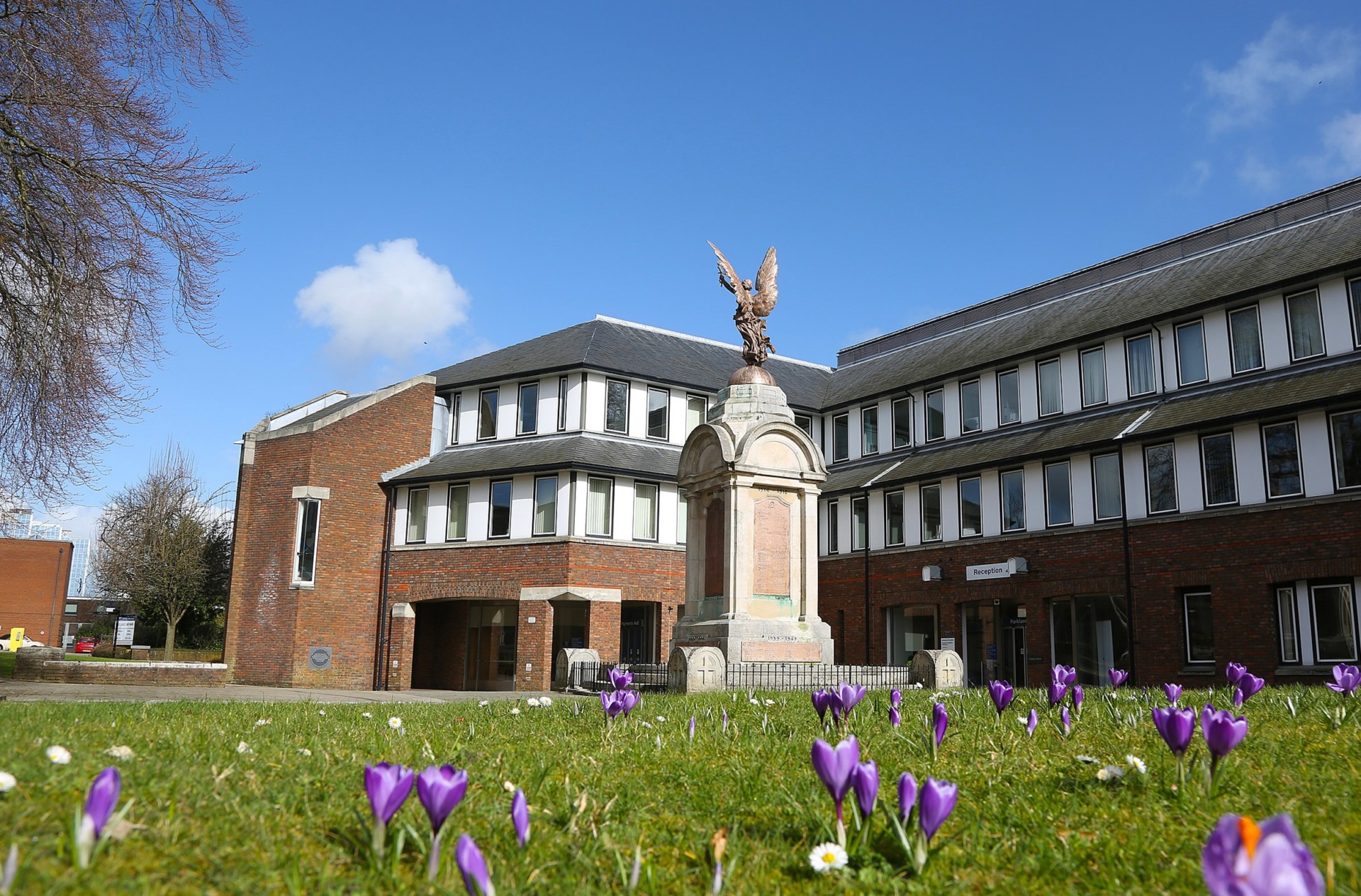
Basingstoke and Deane Borough Council
The ‘Invite a Neighbour’ training concept provided a cost effective and collaborative training forum for GIS professionals in the local area, helping us develop new skills.
To support its imminent migration to Esri’s ArcGIS, Basingstoke and Deane Borough Council arranged for three members of staff to receive professional training from Esri UK. The local authority took advantage of Esri UK’s ‘Invite a Neighbour’ on-site training scheme to reduce its costs, minimise carbon emissions and gain fresh inspiration for new council services.
The council saved over £1,600 on a training course for three delegates, while also reducing carbon emissions
Delegates improved their skills enabling them to develop new GIS web services
Joint training provided a collaborative forum for sharing ideas with other local GIS professionals
The Challenge
Basingstoke and Deane Borough Council was no stranger to Esri’s geographic information system (GIS) technology. Indeed, it had been using solutions from Esri UK for over twenty five years. The organisation was now in the process of migrating to Esri’s ArcGIS, to give it access to new, more versatile web- and cloud-based GIS services. It realised that this pivotal technology upgrade had the potential to significantly transform the way in which it used GIS to deliver services for citizens.
Given the vital importance of the new GIS platform, Basingstoke and Deane Borough Council recognised that it would be beneficial for its GIS specialists to receive ArcGIS training. It wanted to ensure that it had the skills in-house to optimise its use of the new GIS platform, but, like all public sector organisations, it had a limited training budget. Consequently, it feared that the costs associated with paying for employees to travel to a training venue and providing overnight accommodation would make the training course prohibitively expensive.
At a time when councils are trying to make cost savings and lessen their carbon footprint, the ‘Invite a Neighbour’ training concept really makes sense
Robert Curtis – GIS Systems Administrator, Basingstoke and Deane Borough Council
The Solution
The council was already familiar with Esri UK’s on-site training courses, a pragmatic option for organisations looking for a more cost-effective way to train up to twelve employees. It liked the idea of being able to receive training at its own offices but, as it only planned to train three members of staff, it didn’t think this would be feasible. Then the Esri UK training team mentioned its ‘Invite a Neighbour’ programme, a scheme that makes it easy for GIS teams to invite other nearby businesses to join their on-site courses and share the costs and benefits of local, cost-effective training.
Through its participation in a networking group, ‘Hampshire GIS’, Basingstoke and Deane Borough Council was able to quickly establish that there were GIS professionals at other public sector organisations locally who were also interested in receiving ArcGIS training. Esri UK helped liaise with these organisations and handled all of the necessary course administration, maximising convenience for Basingstoke and Deane Borough Council as the host business.
Held in a meeting room at Basingstoke and Deane Borough Council’s offices, the two-day course provided valuable instruction in how to use ArcGIS Server and ArcGIS Online to create a range of different web services and publish maps on the web. Twelve delegates from seven different organisations attended, and the experienced Esri UK trainer brought all the course materials and exercises pre-loaded on laptop computers.
We have gained both the inspiration and skills to advance our use of GIS in the future
Robert Curtis – GIS Systems Administrator, Basingstoke and Deane Borough Council
The Benefits
Cost savings for multiple organisations
The shared approach to training enabled seven public sector organisations to reduce the costs associated with training. Robert Curtis, the GIS Systems Administrator at Basingstoke & Deane Borough Council, says, “When the cost of the course fees, avoided travel and accommodation for three delegates is taken into account, we estimate that we reduced our anticipated training expenditure by over £1,600. The other attending organisations would have made similar savings.”
Reduced carbon impact
The course also enabled the participating councils to minimise their impact on the environment. “At a time when councils are trying to make cost savings and lessen their carbon footprint, the ‘Invite a Neighbour’ training concept really makes sense,” says Curtis. “It enabled us to reduce our training costs, avoid unnecessary expenditure on accommodation and minimise our carbon impact by shortening journeys.”
Greater convenience for delegates
As the training was held at a location not far from any of the participating organisations, delegates were away from their offices for no longer than was absolutely necessary, without wasting any personal time. “When I did a different training session previously, I had to give up my Sunday afternoon to get there in time for Monday morning and didn’t get back until late on the Wednesday evening,” Curtis recalls. “With this course, no-one had to give up their free time, as it was much like a normal working day.”
Improved services for citizens and employees
Most importantly, Basingstoke and Deane Borough Council now has the new GIS skills it needs, enabling it to commence the next chapter in the story of its long use of Esri GIS technology. Initially, the council plans to use the new features and capabilities of ArcGIS to redevelop a number of internal and external map viewers that will provide employees and the general public with improved access to local information.
Inspiration for the future
Curtis believes that the course helped to strengthen the local network of Esri users and gave everyone the opportunity to collaborate more closely with local government colleagues facing similar challenges. “As the other course participants were all people we knew, who worked for similar public sector organisations, the training course gave us a great opportunity to share ideas,” he says. “We have gained both the inspiration and skills to advance our use of GIS in the future.”

Epping Forest District Council
ArcGIS has enabled us to create user-friendly mobile solutions that save money, improve our efficiency and deliver better information to citizens straight away.
In setting out its vision for 2015-2020, Epping Forest District Council recognised the role that “modern technology and innovation” would have in helping to improve services for citizens. To support its Corporate Plan, it deployed Esri’s ArcGIS platform and is now not only delivering better public services, but also making vital resource and cost savings.
The use of ArcGIS web services gives citizens improved access to information online
The deployment of ArcGIS mobile apps allows the council to provide services more efficiently and reduce costs
ArcGIS improves council decisions by delivering customised information to departments
The Challenge
Epping Forest District Council has a multifaceted vision for the future. It wants to support the development of the local economy, build new homes and meet the often challenging needs of citizens, while protecting the green belt, conserving the character of local communities and keeping the council tax low. The council knew that if it was to achieve these goals, it would need to invest in new technologies and look for creative ways to transform its processes. Indeed, it stated in its Corporate Plan 2015-2020: “We want to embrace modern technology and innovation as we strive to improve the quality and efficiency of our services.”
For many years, the council had been using an assortment of different geographic information system (GIS) packages, from multiple suppliers, but felt constrained by the lack of flexibility and functionality that this mixed approach offered. So, in 2015, to support its Corporate Plan, it decided to replace all its legacy GIS solutions with Esri’s ArcGIS platform. “ArcGIS gave us a lot of options, at a time when we needed to embrace new, more innovative ways of working,” says Andrew Gardener, GIS Officer at Epping Forest District Council.
One of the main advantages of ArcGIS is its flexibility and the wide range of components included in the platform as standard, which make it quick and easy to develop many different apps and services
Andrew Gardener – GIS Officer, Epping Forest District Council
The Solution
Within just eight months of deploying ArcGIS, the council’s small GIS team of three people had delivered a staggering array of new GIS apps and services, including:
- Customised web maps for council departments, displaying data relevant for different teams of employees in a format that is easy to access and understand
- Public-facing web maps, allowing citizens to use mobile devices to more easily access information on everything from the locations of polling stations to road closures along the route of the Tour de France
- Mobile apps showing field-based employees the quickest routes between jobs and enabling them to collect data electronically
- A centralised store of geo-spatial data and a single GIS platform for sharing ‘one version of the truth’ throughout the entire organisation.
“The fact that we introduced all this in the first eight months demonstrates just how easy it is to work with ArcGIS,” says Gardener. “One of the main advantages of ArcGIS is its flexibility and the wide range of components included in the platform as standard, which make it quick and easy to develop many different apps and services.”
Gardener and his colleagues have been particularly impressed by the ease at which they can develop new solutions for users of smartphones and tablets using ArcGIS. He says: “ArcGIS gives us mobile GIS apps that we can just pick up and use. It has enabled us to create user-friendly mobile solutions that start to save money, improve our efficiency and deliver better information to citizens straight away.”
ArcGIS […] has enabled us to create user-friendly mobile solutions that start to save money, improve our efficiency and deliver better information to citizens straight away
Andrew Gardener – GIS Officer, Epping Forest District Council
The Benefits
Epping Forest District Council is now gaining extensive benefits from its use of ArcGIS and delivering on its corporate vision.
Better services for citizens
With the development of its new web maps, Epping Forest District Council can now make better information accessible to the general public, including information that wasn’t publically available previously. For added convenience, citizens can also access this information direct from their smart phones and tablets, from any location. The council’s web maps have been well received by local citizens; a new Waste Collection Date web map received over 10,000 hits in the first fortnight alone.
Greater efficiency in council processes
ArcGIS has contributed to significant improvements in the efficiency of key council processes. For instance, it has been used to create a mobile GIS for field-based surveyors, which enables them to check and record the condition of waste bins, bus shelters and other assets far more quickly. The automated solution converts spreadsheets with lists of daily jobs into a time-efficient route; displays this journey (and job details) on the surveyors’ smartphones; and allows asset data to be collected electronically, removing the need for subsequent data entry.
Sustainable cost savings
The efficiency improvements are expected to translate into sustainable long term cost savings, which will help the council to maintain its low council tax bands. The council no longer has to print out paper maps to give to its mobile surveyors and also saves on fuel, as surveyors take the most direct routes between jobs. In addition, citizens who use the online maps to ‘self-serve’ information may not need to call the council, which will dramatically reduce the cost of customer contact.
Well-informed decision making
Employees across multiple departments now rely on intranet-based maps to gain all the information they need to process planning applications and much more besides. “Everyone has a customised GIS, with the precise layers of data they need to do their jobs,” Gardener says. “Consequently, it is much easier for employees to make quicker, more informed decisions and deliver a better quality service for citizens.”
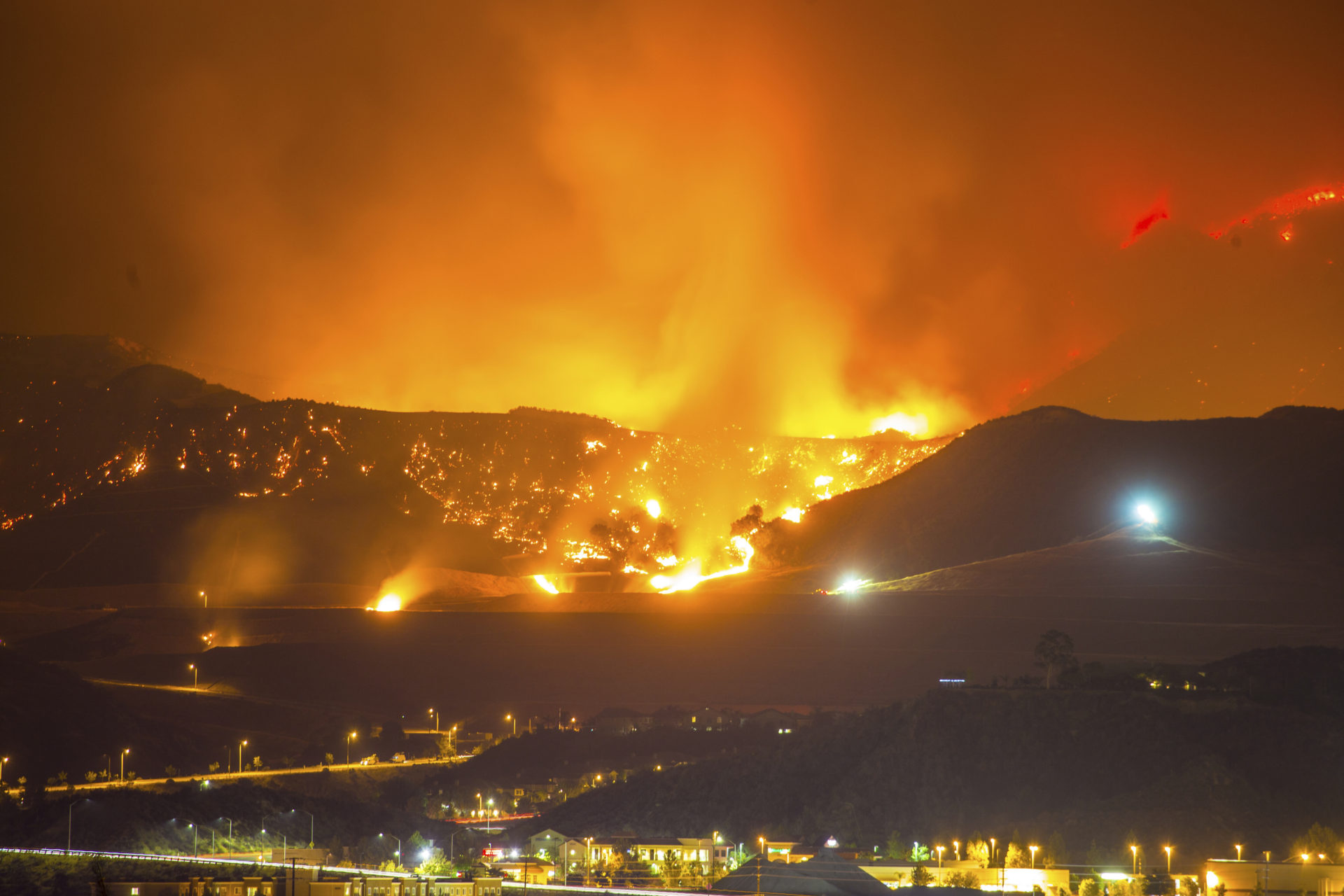
Sompo Canopius
Our underwriters now receive up to date information on natural catastrophes and can make more incisive decisions to protect our business profitability
Global insurer Sompo Canopius has used Esri’s ArcGIS platform to put up-to-date information about potential natural hazards and risks at the fingertips of all its employees. Consequently, the organisation can now make more incisive underwriting decisions and better understand the impact of major catastrophes to protect business profitability.
Underwriters are now better informed about perils and natural hazards at all global locations
The organisation monitored the risk to insured properties during a significant wildfire incident in Canada
Managers can assess the level of accumulated insurance by location and minimise overexposure to risks
The Challenge
Sompo Canopius is a global insurance business, with operations in the UK, Ireland, Netherlands, Switzerland, Bermuda, US and Singapore. Every year, it underwrites billions of pounds worth of business with domestic, commercial and reinsurance customers on every continent. Consequently, it needs to be able to collate, analyse and, critically, understand vast amounts of information about potential natural catastrophes at millions of separate locations all around the world.
“Today’s insurers can potentially access huge volumes of data about hazards and risks from numerous organisations, but trying to distil all this Big Data down into something that underwriters can use on a day-to-day basis is quite challenging,” says Rob Porter, Head of Catastrophe Research at Sompo Canopius. “We wanted to create an online app that would make it easy for anyone in the company to view and interpret up-to-date catastrophe data, about anywhere in the world, on demand.”
ArcGIS Online is an exceptional tool for bringing maps and spatial data to a wider audience, especially people who have not used technical GIS products before. It is highly intuitive and straight-forward to use
Rob Porter – Head of Catastrophe Research, Sompo Canopius
The Solution
Sompo Canopius worked with Esri UK’s Professional Services team to create its app using Esri’s ArcGIS Online solution, incorporating live disaster feeds. Named CatNav, the app is accessed via the company’s secure intranet, making it available to all of the company’s 600 employees in offices around the world. “ArcGIS Online is an exceptional tool for bringing maps and spatial data to a wider audience, especially people who have not used technical GIS products before,” says Porter. “It is highly intuitive and straight-forward to use.”
Now, underwriters can access CatNav when talking with customers or brokers, enter an address, and immediately see accurate information on localised hazards such as flooding, as well as more wide-ranging risk factors including hurricanes and earthquakes. Employees can also use CatNav to view and better understand the accumulation of insured properties in specific areas or, in the event of a natural disaster, easily see which insured properties are at risk.
Esri UK helped Sompo Canopius to integrate CatNav with back-office systems and databases, using Esri’s ArcGIS Server solution and Python scripting, to facilitate a number of automated workflows. For instance, now, when a new insurance policy is accepted, maps of the underwritten locations are automatically generated by ArcGIS and attached to policy documents, with no time delay or manual intervention.
ArcGIS Online supports underwriters, enabling them to make the right decisions about which policies to offer, and at which price, to make the company more profitable over time
Rob Porter – Head of Catastrophe Research, Sompo Canopius
The Benefits
CatNav is delivering a range of commercial advantages for Sompo Canopius including:
Well-supported underwriting decisions
Underwriters are now better informed about perils and natural hazards at all global locations and can ensure that potential risks are accounted for, every time. “Good underwriting is at the very foundation of how insurers make money,” says Porter. “ArcGIS Online supports underwriters, enabling them to make the right decisions about which policies to offer, at which price, to make the company more profitable over time. It gives the business greater confidence that underwriters are underwriting policies appropriately.”
Greater understanding of exposure to risk
Using CatNav, senior managers can better monitor the business’ exposure to risk, as catastrophes unfold. For instance, during a significant wildfire incident in Alberta, Canada, the organisation consumed data from NASA on the spread of the fire and used ArcGIS to monitor the risk to insured properties. “With ArcGIS Online, we could make near real-time information on the spread of the wildfires and the proximity of insured locations accessible to all our global employees,” Porter recalls. “There was a lot of media hype about the disaster, but ArcGIS Online enabled us to identify properties at risk and allay management concerns about the likely extent of any claims.”
Sound business management
Sompo Canopius also relies on CatNav to help monitor the level of accumulated insurance in specific regions and form sound business strategies to minimise overexposure to risks. “Global insurance is a highly competitive market,” says Porter. “CatNav helps us to ensure the business is appropriately diversified. The app helps us to make the right commercial decisions to achieve competitive advantage.”
Significant internal productivity gains
ArcGIS saves a significant amount of time for Sompo Canopius, partly because of the automation of key map production workflows and partly because the GIS team no longer has to respond to ad hoc requests for catastrophe maps. Previously, it took two or three hours for a GIS specialist to produce a pdf map showing a particular hazard or risk scenario at a certain location; now staff can see a map of whatever location they want, instantly.
More responsive client service
Staff can respond more quickly to client enquiries, because, in most circumstances, they no longer have to request information on potential risks and wait for it to be supplied. “They often don’t have to refer queries back to risk specialists, saving anything from a few hours to a whole day,” Porter estimates. “This helps us to provide a better quality of customer service.”


